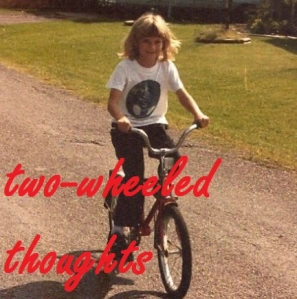Whew, a long one today – sorry, folks, but I’ve been reading.
Because I’m not busy enough (ha) I’ve been reading a few short prose pieces here and there. Some of the following come from the Library of America’s Story of the Week (an email you can sign up for for free, if you have tons of free time or are a glutton like me). One I found languishing in a file on my computer. The internet, and friends’ referrals, account for the rest.
Willa Cather’s “A Death in the Desert” was a Story of the Week, viewable here. I found it a moving story, but much more so with the context included, about Cather’s devotion to a composer who died young. As the Library of America points out, the fact that this story was published in three versions, each subsequently edited and shortened, makes it an excellent opportunity to study editing for length (if you were to go find all three). There’s something Victorian in the manners and fainting emotions in the story that is less compelling and relateable for me personally, though. I’m glad to have learned a bit more about Cather, but it’s not my favorite thing I’ve read this month.
Marjorie Sandor’s “Rhapsody in Green,” however, blows my mind. (This was the one found on my hard drive. Originally published by The Georgia Review and viewable here, if you sign up for a free account.) It is a very brief lyric essay about, yes, the color green. Sandor evokes so much via this color, and her search for an unachievable shade: color, we might think, is a visual element, but she uses touch, smell, and taste as well. On its face about this color she can’t find, this essay is also a glancing view of the narrator’s life story, at least in a few relationships and geographical locations. There are four references (in less than three pages) to a time “I fell in love when I shouldn’t have.” It is a brave and risky move to so emphasize an event that she never explains further. As we writing students say, this one would have been destroyed in workshop. But I love it, this level of tantalization, and her bold implication that no, we don’t need to know any more about it than that. There are also two references to “a/my friend who puts up with such eccentricities.” I love this epithet, this characterization, and in both cases – this, and the “fell in love when I shouldn’t have” – I appreciate the use of an intentional echo to good effect. Also, nothing I’ve said here begins to get at the loveliness, the lyricism and sensual intimacy, of Sandor’s writing. Do go check this one out.
Disclosure: Dave Wheeler is my editor at Shelf Awareness, and a friend.
I have done a poor job of keeping up with Dave’s work, and recently returned to see what I’d missed, particularly in his essays, which impress me so. I am gradually catching up now – you can see his published essays here (and more in other links on that page). And I love a lot of what Dave writes: I appreciate the short, dreamy, feeling quality of “Science for Boys”, and the inquiring mind exposed in “Death and Its Museum”. But I think my favorite essays of those I’ve read so far deal with art, and how Dave takes it in. “Two Men Kissing” and “Some Holy Ghost” each offers so much, and I’ve forwarded them to many friends.
Today, I am very pleased by “A Moment Spins on the Axis of You: The Fourth Dimension of Yayoi Kusama’s ‘Infinity Mirrors'”. Here Dave encounters Kasuma’s installation, in particular, and the grand scale of its claimed subject. But even more than the named artwork, he considers what it means to wait – for art, for anything – and what contribution waiting, or time, or the audience experience, may offer. I appreciate his voice: he speaks with authority about his own experiences, but with a humbleness as regards the world of art criticism; he can be playful even as we feel he is serious. And of course I recognize myself when he writes, “As a lifelong reader, I have cultivated a sharp sense of when I can quit a book without worrying that I have missed something of importance. As a wide-eyed novice to visual arts, I am less assured.” I think I feel something like the same thing when I try to see my own reactions to visual art: I don’t even know what I don’t know.
Perhaps recognizing myself in Dave is part of recognizing Dave, someone I know personally and enjoy talking to, however infrequently we get around to it. And maybe that enjoyment is inextricable from my appreciating his writing. Maybe you want to help me test this: go check out Dave’s work and let me know what you think.
Good, right?
Washington Irving’s “Rip Van Winkle”, another Story of the Week, was engaging enough in its descriptive power; I was interested in getting a better grasp on one of those legends that’s in our collective consciousness whether we’ve read it or not (I don’t believe I had). The misogyny in the treatment of Dame Van Winkle, and the cursory treatment of all the women in the story (none of whom, if memory serves, had names), rankled. I’m not sorry I took the time, but it wasn’t a highlight, or anything.
Charles W. Chesnutt’s “The Bouquet”, on the other hand, was both lovely and harrowing. (I went ahead and followed this link to a Wiley Cash article in Salon, where he argues for Chesnutt as genius, and I don’t disagree.) If you want to feel gutted by our national heritage where race is concerned – well, none of us does, but I feel it’s important we don’t look away, either – give this short story a try. It has a surface on which it can act as a sweetly sad and simple tale, but its depths are significant.
Disclosure: Mesha Maren regularly serves as guest faculty at West Virginia Wesleyan College in my alma mater MFA program. I consider her a friend.
I was deeply impressed with Mesha’s recent essay in Oxford American, titled “West Virginia in Transition”. She moved away as a young, closeted, queer woman, and upon moving back, she investigates the experiences of her counterparts: queer youth growing up twenty years later in her own hometown. She muses on the ways in which their lives are different and the ways in which they’re similar. It’s a story that’s important to me, because both queer communities and Appalachian ones are much on my mind. I’m glad topics like this are getting bandwidth. But also, as anyone who knows Mesha’s work will expect, it’s a gorgeously written story. “The way these ridges and hollows both cradle and cleave.” Beautifully done, and highly recommended.
Finally, my father sent me a link to this story from National Geographic: “Clotilda, ‘last American slave ship,’ discovered in Alabama.” Joel K. Bourne, Jr. brings us up to date on the recent confirmation that Clotilda has been identified where she was burned and scuttled in the Mississippi Delta after a voyage spurred by a wealthy white man’s bet that he could import slaves from Africa more than 50 years after such imports became illegal. In 1860, 109 men, women, and children survived the voyage into Mobile and were then sold into slavery. Part of what’s unique about this group of abducted Africans is that late date: Clotilda’s survivors lived long enough in some cases to be interviewed on film. They founded Africatown on the edge of Mobile, and their some of descendants live there today. When I passed through Mobile this spring, I missed Africatown. But, unknowing, I stayed in Meaher State Park, which is named after a wealthy white family, including the man who made the bet.
I found this article, accompanied by pictures and video, moving. I think it’s an important story to read and consider today. I also followed several links, like this one offering a list of destinations to visit for African American history and culture. I found a few of these on my travels this year; I’ve added to rest to my itinerary.
There is always something to keep our minds busy. I just feel lucky to have the time to follow these leads. What have you read lately?
Filed under: book reviews | Tagged: creative nonfiction, essays, history, journalism, LGBTQ, race, sense of place, short stories, visual arts | 5 Comments »

















